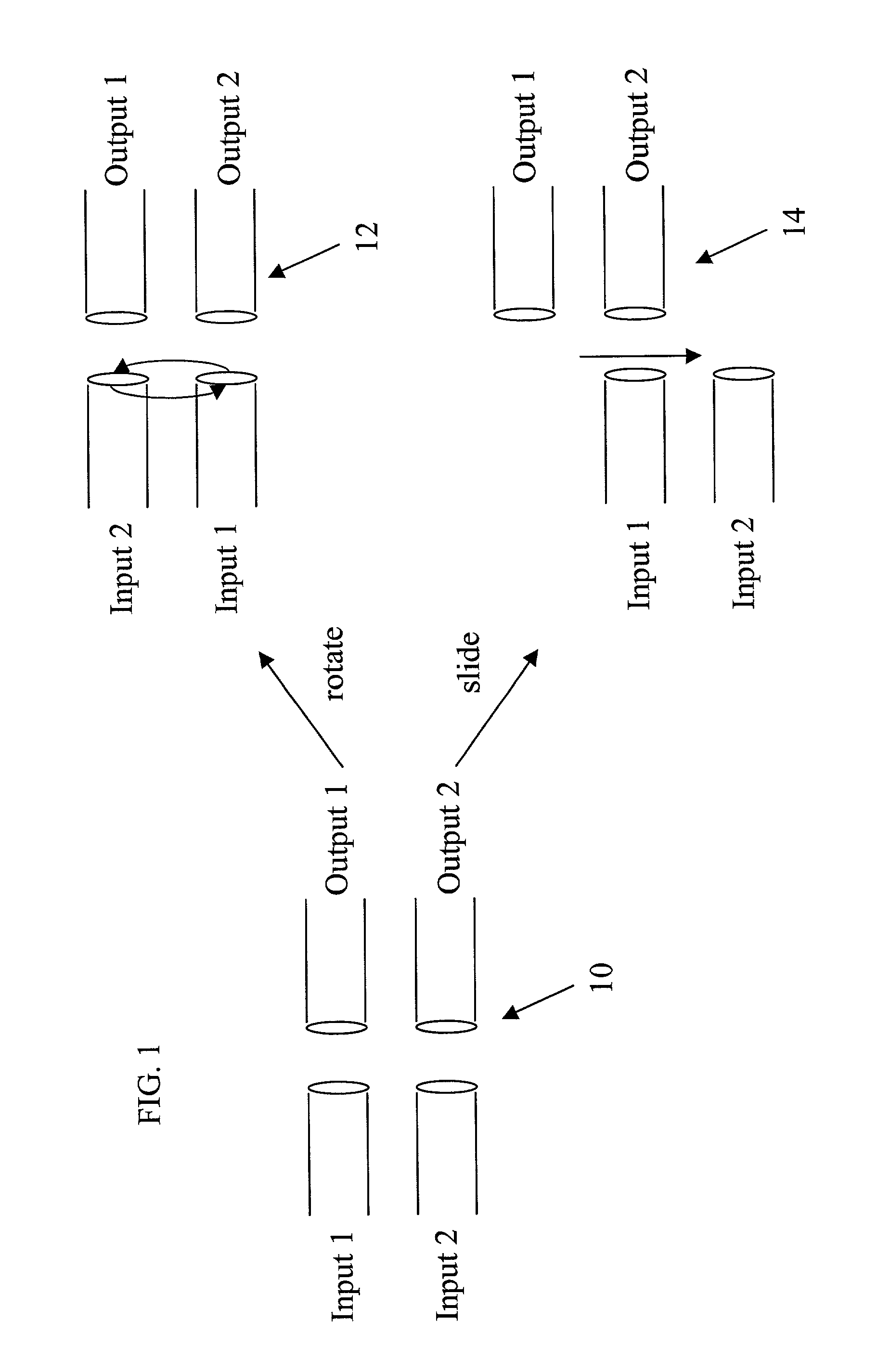Switch and variable optical attenuator for single or arrayed optical channels
a variable optical attenuator and switch technology, applied in the field of integrated optical components, can solve the problems of reducing the application range affecting the implementation of optical networks, and affecting the quality of optical light guides,
- Summary
- Abstract
- Description
- Claims
- Application Information
AI Technical Summary
Problems solved by technology
Method used
Image
Examples
Embodiment Construction
[0012] An aspect of the present invention provides an optical component including a waveguide substrate having an edge and having first and second waveguides formed within the waveguide substrate, the first waveguide having a first end on the edge and the second waveguide having a second end on the same edge. A mirror is positioned adjacent to the edge of the waveguide substrate to receive an optical signal from the first end of the first waveguide and direct the optical signal to the second end of the second waveguide in at least one position of the mirror. The mirror is movable to alter the amount of coupling between the first waveguide and the second waveguide.
[0013] Another aspect of the present invention provides an optical component including a waveguide substrate having an edge and having first, second and third planar waveguides extending within the waveguide substrate, each of the first, second and third waveguides having an optical path extending through the edge of the wa...
PUM
 Login to View More
Login to View More Abstract
Description
Claims
Application Information
 Login to View More
Login to View More - R&D
- Intellectual Property
- Life Sciences
- Materials
- Tech Scout
- Unparalleled Data Quality
- Higher Quality Content
- 60% Fewer Hallucinations
Browse by: Latest US Patents, China's latest patents, Technical Efficacy Thesaurus, Application Domain, Technology Topic, Popular Technical Reports.
© 2025 PatSnap. All rights reserved.Legal|Privacy policy|Modern Slavery Act Transparency Statement|Sitemap|About US| Contact US: help@patsnap.com



